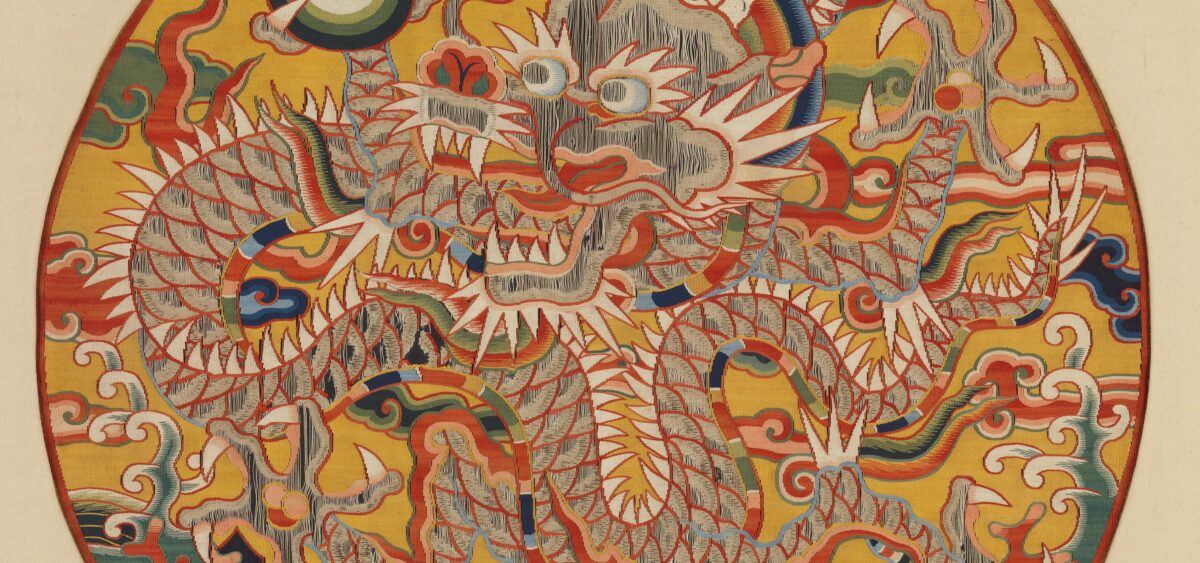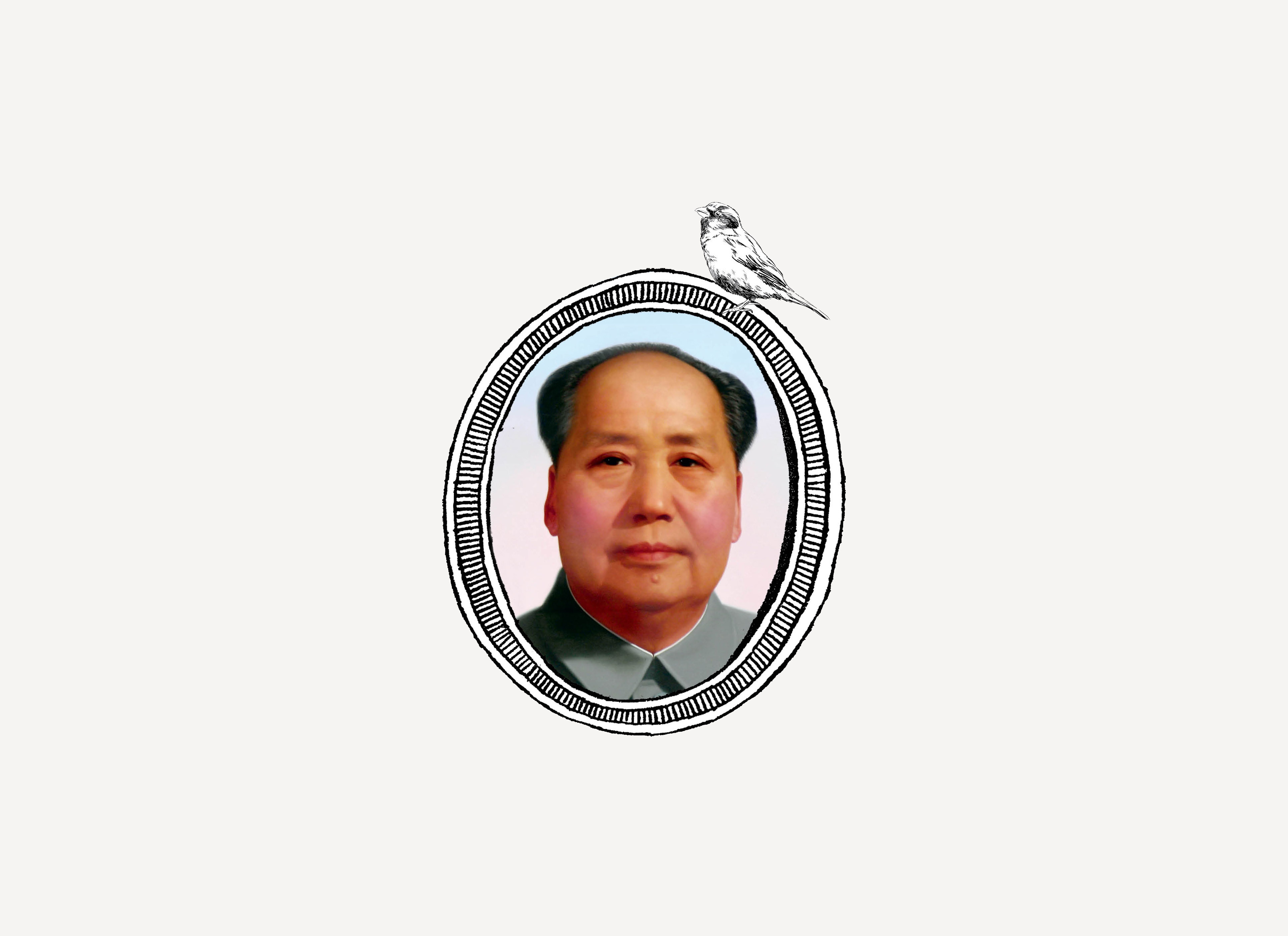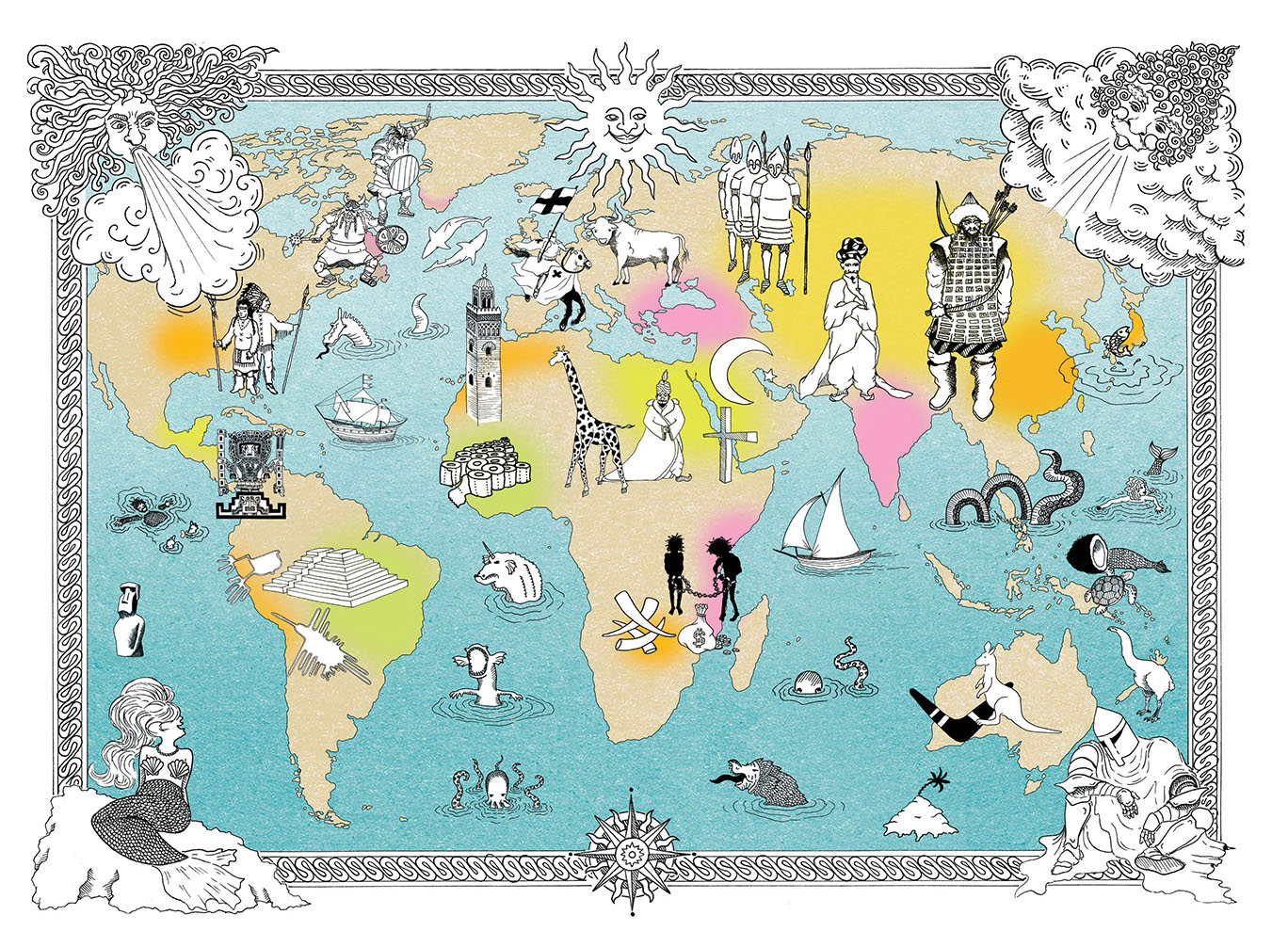
The colour yellow is central to Taoist cosmogony – it brings happiness and for centuries has been considered the colour of the emperor. At the same time, it connotes death and decline… How did the Chinese manage to contain so many different meanings in a single colour?
In the year 2500 BCE, one of the five legendary Chinese emperors ruled in the Yellow River Delta: the Yellow Emperor. He was the one that laid the groundwork for the development of the entire civilization. In addition to the basic methods of traditional Chinese medicine, he also invented the potter’s wheel, writing and mathematics. From that point onwards, the country established in the meanders of the Yellow River grew in power, while its culture flourished… It is true that there is no evidence to support this story, but it can be clearly seen that the colour yellow is of prime importance for the Chinese. For many centuries, it was reserved for the emperor and represented good fortune. But, as it turns out, it has its darker side, too.
Let’s first look at the hierarchy of colours. The Chinese divided them into two groups: basic (zhengse) and intermediary (jianse) colours. The former hold positive associations, while the latter hold negative ones. Traditionally, the Chinese recognize five basic colours: bai (white), hei (black), chi (red), qing (green-blue, dark blue) and huang (yellow). Their shared name is wucai. To better understand the symbolic complexity of the colour yellow, let’s turn to the most famous source of knowledge about Chinese characters: the dictionary Shuowen Jiezi, whose title means ‘Explaining Graphs and Analysing Characters’.
This etymological dictionary, which was compiled by Confucian scholar Xu Shen at the beginning of the second century, explains the meaning of 9353 characters. It defines huang as the ‘colour of the earth’ (literal meaning: Huang, di zhi se ye, ‘yellow is the colour of the earth’). In northern China, where the Middle Kingdom was formed, yellow earth was seen everywhere. The sandstorms that swept through the Gobi Desert brought layers of loess, colouring the land and the waters of the mother river of China, Huang He (‘Yellow River’). The character which represents it consists of a phonetic part, derived originally from the character for ‘light’, pronounced as guang; and a semantic part – a pictogram that stands for a field (and earth, by association).
Unfortunately, the ancient scholar was wrong. When archaeologists discovered oracle bones – the oldest remnants of Chinese writing in the form of turtle shells with inscriptions that describe fortune-telling at the Shang dynasty’s court – it turned out that originally huang didn’t include the part representing ‘field’. The origin of the structure of this character remains unknown. Contemporary dictionaries associate huang with the earth, but also include such definitions as the colour of gold, ripe apricots, or the sky at sunrise.
The spring and the centre
In the Taoist theory of Five Phases, the colour yellow occupies the central position, since it symbolizes the fifth cardinal direction: the centre. This is where the emperor, the Son of Heaven who ensures the harmony between the sky and the earth, rules over other directions. To each of the five elements (or rather phases of change) corresponds an animal, organ, planet and crop. In the case of earth (and, in turn, the colour yellow) these include the ox, heart, Saturn and millet.
It’s also noteworthy that the underworld is referred to as huangquan, meaning ‘yellow spring’. This word signifies the world beyond, where the soul travels after death, but its origin is quite literally ‘down-to-earth’. The springs that emerged where people were buried would wash away loess soil and turn yellow. In consequence, yellow springs were associated with the dead.
Colours, however, are not only part of nature, but also of culture. Like many other nations, the Chinese used colours for different purposes: for aesthetic pleasure, to ensure one’s wellbeing, bring misfortune upon someone else, or to convey important messages (for instance, to identify someone or check who occupied a building). Also, the Chinese system of administrative ranks became so elaborate that it would be hard to follow it without additional colour coding. Thankfully, each of the nine ranks was assigned a different colour of robes, ornaments and ball on the headwear. This system enabled people to identify the person they were dealing with. The colour that the officials weren’t allowed to wear was yellow. It was not meant for mere mortals, only the Buddhist monks Gelug and Kagyu.
The colour of the emperor
When looking at the architecture of the Forbidden City towering over central Beijing, it is easy to guess that we are confronted with power and majesty. But it’s only after we’ve noticed the yellow roof tiles that we can be certain that this is where the emperor, the Son of Heaven, resides. The red walls signify the heavenly energy yang, while the yellow roof signifies earth and yin. Before the sixth century, it was the colour red that was associated with the emperor. It wasn’t until the reign of the Song dynasty that yellow became reserved for the emperor and his descendants. Nonetheless, in the portraits we can still see the monarchs wearing red clothes with some yellow elements. Yellow became a dominant colour slightly later, during the reign of the Mongol Yuan dynasty, and remained such until the empire collapsed.
The representatives of the Ming dynasty, who came to power in the 14th century, wore loose, yellow robes, which became more and more intricately embellished. These are the so-called dragon robes (longpao) – the everyday imperial clothing, whose name dates back to the Tang dynasty. The Ming dynasty slightly modified the clothing worn by the Mongols, adding five-finger dragons on the back and chest area, as well as on the skirt and sleeves. In the 12th century, the throne, together with longpao, was taken over by the Manchurians. Although they changed a bit the design and ornaments to emphasize their different ethnic identity from the Han Chinese, they preserved the colour.
In the portraits, the 12 emperors from the Qing dynasty – the last one in the imperial history of China – are proudly sitting on the throne, wearing lavishly embellished yellow clothes and red headwear. The first one, the Jurchen ruler Nurhaci, wears the simplest robes, which are still impressive. On the chest, leg and arm areas, there are yellow dragons entangled in circles, while the edges are finished with blue and gold trimming. The third one, Kangxi – who was in power for as many as 60 years (1662–1722 CE) and is considered one of the greatest Chinese emperors – has lavish robes. Intricate cloud patterns and dragons embellish not only his entire clothing, but also his sophisticatedly carved dragon throne and footrest. Seven subsequent portraits also impress with a plethora of colours and complex ornaments. One thing, however, stays the same: the yellow colour of the robes. Only the last Chinese emperor isn’t so extravagantly dressed. He looks at us shyly from the black-and-white photograph. It is no surprise given that he was then only a few years old. His name was Puyi and his reign name Xuan Tong. He was crowned in 1908 as a two-year-old. As might be expected, he didn’t rule long, abdicating four years later.
Young, rich and brave
In 1920, the Dragon dynasty reign came to an end. Yellow lost its status as the emperor’s colour, but it preserved the meanings it had developed over the centuries. Many of them are manifested in language, some in culture.
Colour symbolism is visible, for instance, in the Beijing opera. It is based on conventions, and the props and mask colours can tell us a lot. A yellow face signifies ferociousness, brutality, charisma, and a tendency to conspire. A well-known example of the character that embodies these features is Dian Wei – a military general during the reign of the Eastern Han dynasty, who appears in Luo Guan Zhong’s novel Romance of the Three Kingdoms. The above-mentioned traits don’t seem positive, although they might have been desired in some warriors. Nonetheless, the Chinese continue to associate the colour yellow with good fortune. Decorating the house with four-character aphorisms painted on yellow paper is supposed to bring happiness. Similarly, the expression huangdao jiri (literal meaning: ‘yellow road/yellow fate’, ‘happy days’) stands for good times ahead. Even when juxtaposed with green (which is classified as an intermediary colour with some negative connotations), the colour yellow still maintains its positive meaning, like in the proverb lüyi huangli (‘green outside, yellow inside’), in which the green exterior stands for something bad and inauthentic, and it’s only underneath that one can find truth and goodness.
‘To put on yellow robes’ means to become an emperor, but there are also other interesting linguistic associations. During the reign of the sixth- to seventh-century Sui dynasty, children who hadn’t turn three yet were referred to as ‘yellow’. In the times of the Tang dynasty, on the other hand, the colour was used for newborn babies. This is where the phrase ‘yellow mouth’, which stands for a young, inexperienced person, comes from. Another example is the expression ‘yellow child, white old man’, which associates the colour yellow with youth, whereas white is associated with old age.
Old age and pornography
There are many shades of yellow, though, and some are less beautiful. Regardless of its associations with gold, emperors, children and youth, it also signifies old age and death, since it is related to earth and graves. In Chinese, ‘a handful of yellow earth’ means something insignificant. A yellow face connotes the face of an older, ill-looking man. In contrast, a person who is strong and healthy has a red complexion. As can be easily observed, we don’t differ that much from the Chinese in this respect. Glowing skin is universally considered a manifestation of good physical condition and great mood.
Besides an old face, old grain is also described as yellow. Similarly, withered plants bring to mind decline and death. Through this metaphor the Chinese describe the changing seasons, as in the saying huihuang zhuanlü: what is yellow and thus old, like autumn leaves, is replaced with the young and green spring vegetation. Withering autumn leaves also symbolize decline, so when the Chinese say that ‘something turned yellow’ (shiqing huang le), they mean that they have failed.
In today’s context, yet another aspect of yellow colour symbolism needs to be mentioned: pornography. Ancient rulers, especially the Yellow Emperor, certainly wouldn’t be glad to hear this, but the word huangshu (‘yellow books’) refers to pornographic literature. This connotation isn’t rooted in Chinese culture, though, and it’s difficult to identify its origin. Perhaps it comes from the English ‘yellow journalism’, which stands for an unethical kind of journalistic work.
Undoubtedly, yellow is the most interesting colour in the Chinese palette. While initially it was associated mostly with the colour of the earth where the Middle Kingdom was established, over time it gained many new meanings. It was central to the Taoist hierarchy of colours and it later became strongly related to the emperor, becoming the official colour of robes, embellishments, and all attributes of power for centuries. Interestingly, the connection between this colour and the emperor didn’t result from its symbolic closeness to gold and wealth, but from its association with the earth – the symbol of the legendary Yellow Emperor and his mythical counterpart, the Yellow Dragon that he embodies.
If we consider the less positive connotations, we can see that we don’t differ much from the Chinese: a yellow face is universally associated with disease or old age, while yellow colours in nature are viewed all over the world as the herald of autumn. Are these contradictory connotations surprising? Absolutely not. After all, as in the Taoist yin-yang, everything has two sides: there is childhood and old age, wealth and death, imperial majesty and pornography.









